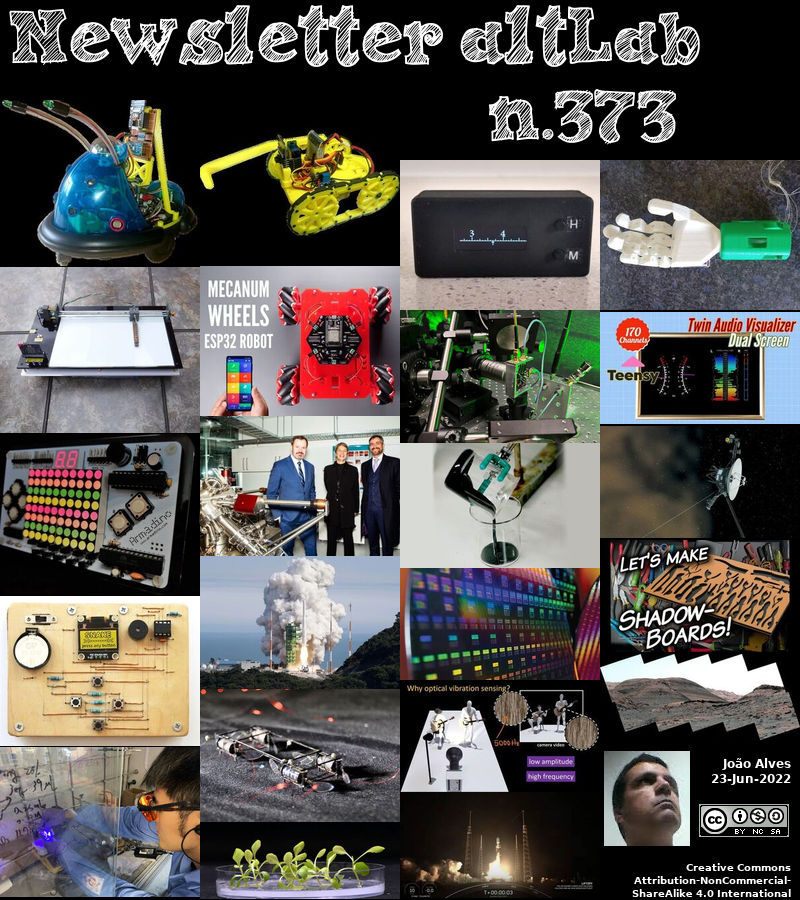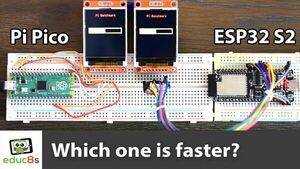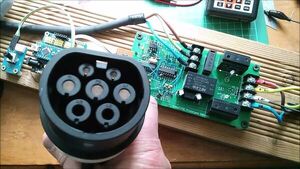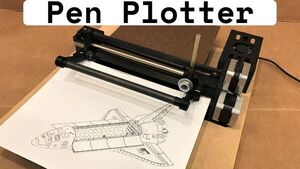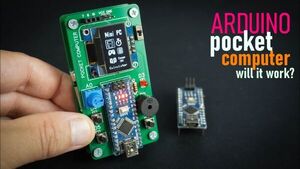2022-06-23 - Nº 373
Editorial
Esta é a Newsletter Nº 373 que se apresenta com o mesmo formato que as anteriores. Se gostar da Newsletter partilhe-a!
Todas as Newsletters encontram-se indexadas no link.
Esta Newsletter tem os seguintes tópicos:
Faz hoje anos que nascia, em 1775, o físico francês Étienne-Louis Malus. Ele descobriu que a luz, quando reflectida, se polariza parcialmente plana; ou seja, os seus raios vibram no mesmo plano. Ele serviu no corpo de engenheiros de Napoleão, lutou no Egipto, e contraiu a peste durante a campanha abortada de Napoleão na Palestina. Enviado para a Europa depois de 1801, começou a investigação em óptica. Em 1808, descobriu que os raios de luz podem ser polarizados por reflexão, enquanto olhava através de um cristal de faísca da Islândia para as janelas de um edifício reflectindo os raios do Sol. Reparou que ao rodar o cristal a luz se extinguia em certas posições. Aplicando a teoria corpuscular, argumentou que as partículas de luz têm lados ou pólos e cunhou a palavra "polarização".
Faz também hoje anos que nascia, em 1859, o industrial francês Édouard Michelin. Ele, com o seu irmão mais velho André, fundou a Michelin Tyre Co. em 1888, expandindo a empresa de borracha fundada (1832) pelo seu avô, Aristide Barbier, e Nicolas Edouard Daubree. Os Michelins fizeram os primeiros pneus que podiam ser facilmente removidos para reparação, para bicicletas (1891) e para automóveis (1895). Introduziram padrões de banda de rodagem de pneus, pneus de balão de baixa pressão, e pneus com cordas de aço. A empresa criou uma organização de guias turísticos que colocou marcos nas estradas francesas e estabeleceu um serviço de mapa de estradas padrão para a maior parte da Europa. André criou guias Michelin para promover o turismo de carro. O primeiro Guia Vermelho, com classificação de restaurantes, foi publicado em 1900.
Faz igualmente hoje anos que nascia, em 1902, o desenhador de computadores Howard T. Engstrom. Ele promoveu o primeiro computador digital disponível comercialmente, o Univac. Como professor de Yale tinha escrito um trabalho sobre a base matemática para técnicas de cripto-análise. Durante a II Guerra Mundial foi chamado à Marinha e colocado no comando da "Secção de Pesquisa" das máquinas automáticas OP-20-G para a descodificação de mensagens. Depois da guerra, foi co-fundador da Engineering Research Associates, uma empresa privada para trabalhar em tecnologia de circuitos digitais electrónicos para a Marinha com base num contrato, com antigos investigadores da Marinha. A ERA entregou o seu primeiro computador Atlas à Agência Nacional de Segurança em Dezembro de 1950. Como vice-presidente para a investigação, Engstrom tomou a iniciativa de fazer uma versão comercial, rebaptizada Univac.
Faz também hoje anos que nascia, em 1912, o matemático inglês Alan Turing. Ele foi pioneiro no campo da teoria informática e contribuiu com importantes análises lógicas de processos informáticos. Fez importantes contribuições para a matemática, a cripto-análise, a lógica, a filosofia e a biologia e para as novas áreas mais tarde designadas por informática, ciência cognitiva, inteligência artificial, e vida artificial. Ele é amplamente considerado como o pai da informática teórica e da inteligência artificial. Durante a Segunda Guerra Mundial, Turing trabalhou para o Government Code e Cypher School (GC&CS) em Bletchley Park, o centro britânico de quebra de cifras que produziu Ultra intelligence. Durante algum tempo liderou a Hut 8, a secção responsável pela cripto-análise naval alemã. Aqui, concebeu uma série de técnicas para acelerar a quebra de cifras alemãs, incluindo melhorias no método da bomba polaca antes da guerra, uma máquina electromecânica que podia encontrar cenários para a máquina Enigma. Turing desempenhou um papel crucial na quebra de mensagens codificadas interceptadas que permitiram aos Aliados derrotar as potências do Eixo em muitos compromissos cruciais, incluindo a Batalha do Atlântico.
Por fim, faz hoje anos que nascia, em 1943, o cientista da computação norte-americano Vint Cerf. Ele é considerado um dos pais da Internet. Ele co-desenhou a arquitectura do funcionamento da Internet com os protocolos TCP/IP. Cerf foi também pioneiro no estabelecimento do primeiro serviço comercial de correio electrónico, enquanto vice-presidente da MCI Digital Information Services (1982-1986). Juntou-se à Google como vice-presidente em 2005.
Nesta semana que passou ficámos a saber que as sondas Voyager lançadas em 1977 estão a morrer. Após quase 45 anos no espaço, ainda estão a funcionar, enviando diariamente dados para a Terra a partir dos planetas mais distantes conhecidos do sistema solar. Viajaram mais longe e duraram mais tempo do que qualquer outra nave espacial na história. E atravessaram para o espaço interestelar, de acordo com a nossa melhor compreensão da fronteira entre a esfera de influência do Sol e o resto da galáxia. São os primeiros objectos feitos pelo homem a fazê-lo, uma distinção que manterão pelo menos por mais algumas décadas. Estas sondas viajaram por todos os planetas exteriores (com excepção de Plutão) e alteraram para sempre a nossa compreensão do sistema solar e da sua origem. De lembrar que a bordo destas sondas, a NASA colocou uma mensagem, uma espécie de cápsula do tempo, destinada a comunicar uma história do nosso mundo aos extraterrestres. A mensagem da Voyager é levada por um disco fonógrafo, um disco de cobre dourado de 12 polegadas contendo sons e imagens seleccionados para retratar a diversidade da vida e da cultura na Terra.
Na Newsletter desta semana apresentamos diversas noticias, artigos científicos, projetos de maker e alguns vídeos interessantes. É apresentada a revista Hackspace nº56 de Julho.
 João Alves ([email protected])
João Alves ([email protected])
O conteúdo da Newsletter encontra-se sob a licença  Creative Commons Attribution-NonCommercial-ShareAlike 4.0 International License.
Creative Commons Attribution-NonCommercial-ShareAlike 4.0 International License.
Novidades da Semana
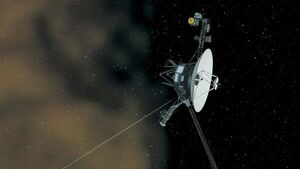
Record-Breaking Voyager Spacecraft Begin to Power Down
"The pioneering probes are still running after nearly 45 years in space, but they will soon lose some of their instruments. If the stars hadn't aligned, two of the most remarkable spacecraft ever launched never would have gotten off the ground. In this case, the stars were actually planets—the four largest in the solar system. Some 60 years ago they were slowly wheeling into an array that had last occurred during the presidency of Thomas Jefferson in the early years of the 19th century. For a while the rare planetary set piece unfolded largely unnoticed. The first person to call attention to it was an aeronautics doctoral student at the California Institute of Technology named Gary Flandro." [...]
Outras Notícias

NASA’s Curiosity Captures Stunning Views of a Changing Mars Landscape
"Striking rock formations documented by the rover provide evidence of a drying climate in the Red Planet’s ancient past. For the past year, NASA’s Curiosity Mars rover has been traveling through a transition zone from a clay-rich region to one filled with a salty mineral called sulfate. While the science team targeted the clay-rich region and the sulfate-laden one for evidence each can offer about Mars’ watery past, the transition zone is proving to be scientifically fascinating as well. In fact, this transition may provide the record of a major shift in Mars’ climate billions of years ago that scientists are just beginning to understand. The clay minerals formed when lakes and streams once rippled across Gale Crater, depositing sediment at what is now the base of Mount Sharp, the 3-mile-tall (5-kilometer-tall) mountain whose foothills Curiosity has been ascending since 2014. Higher on the mountain in the transition zone, Curiosity’s observations show that the streams dried into trickles and sand dunes formed above the lake sediments." [...]

New level translators from Nexperia support legacy and future mobile phone SIM cards
"Nexperia, the expert in essential semiconductors, today announced the latest addition to its family of voltage level translators, the NXT4557GU and NXT4556UP. These devices enable seamless connectivity of next generation low voltage mobile phone baseband processors with its subscribers’ identity module (SIM) cards. As processor geometries advance to single digit nanometer nodes, the core voltage of advanced SoCs is decreasing. This development results in the increasing need for voltage translators to connect the SoC to other standard process devices and I/O ports like legacy Class B and Class C SIM cards. The NXT4557GU and NXT4556UP dual-supply translators support voltages levels between 1.08 V and 1.98 V on the host processor side and 1.62 V to 3.6 V on the SIM card side. These operating ranges make these devices compliant with legacy Class B (3.0 V ± 10%) and Class C (1.8 V ± 10%) voltage levels, while maintaining compatibility with the voltage levels which will be used by future SIM card interface standards (1.2 V ± 10%)." [...]

NXP Extends S32 Automotive Platform with S32Z and S32E Real-Time Processor Families for New Software-Defined Vehicles
"NXP Semiconductors N.V. (NASDAQ: NXPI) has announced two new processor families that extend the benefits of NXP’s innovative S32 automotive platform with safe, high-performance real-time processing. The S32Z and S32E processor families help enable the automotive industry to accelerate the integration of diverse real-time applications for domain and zonal control, safety processing and vehicle electrification that are critical to the next generation of safer and more efficient vehicles. The S32Z processors are ideal for safety processing and domain and zonal control, while the S32E processors are ideal for electric vehicle (xEV) control and smart actuation. The software-compatible S32Z and S32E processors help enable software-defined vehicles, reduce software integration complexity and enhance security and safety. The automotive industry’s evolution to domain and zonal architectures is attractive to carmakers, enabling them to optimize wiring harnesses, reduce cost and weight and implement a more scalable and cost-effective, software-centric approach for developing and updating intelligent vehicles. This massive transformation requires new processors that offer higher performance, application isolation and memory expansion capabilities to support software-defined vehicles and future innovations." [...]

STMicroelectronics’ new chip boosts energy efficiency in consumer electronics, with potential to save almost 100 terawatt-hours worldwide
"STMicroelectronics (NYSE: STM), a global semiconductor leader serving customers across the spectrum of electronics applications, is enhancing the sustainability of personal computing with its latest innovation. The new chip, called ST-ONE, sets to increase energy efficiency in a wide variety of ac-dc adapters, fully compliant with USB-PD 3.1, including laptop and smartphone chargers. New adapters built with ST-ONE can reduce both CO2 emissions and the quantity of plastics consumed. The new ST-ONE chip pairs with ST’s MasterGaN power output modules based on advanced gallium-nitride (GaN) semiconductor technology. The GaN chips enable significant energy savings and smaller equipment dimensions. Although laptops provide optional power-saving settings, every machine can save even more energy if equipped with a more efficient power adapter." [...]

Renesas Delivers Industry’s Most Complete Intelligent Sensor Solutions for IoT Applications
"Offers New Sensors and Signal Conditioning ICs Complementing Leading MCU Line, Advanced Firmware, Embedded AI, and Unique Quick-Connect IoT Design Platform. Renesas Electronics Corporation (TSE:6723), a premier supplier of advanced semiconductor solutions, is changing the way designers build sensor-connected IoT applications with a range of new solutions targeted at faster design cycles, improved accuracy, and reduced system cost. In addition to the new HS4XXX family of relative humidity and temperature sensors, Renesas is introducing the ZSSC3281 sensor signal conditioning (SSC) IC for highly accurate amplification, digitization, and sensor-specific correction of sensor signals. These new products complement Renesas’ extensive MCU portfolio and embedded AI solutions. The sensor design process is supported by Renesas’ unique system design platform that significantly eases the prototyping of IoT systems. The Renesas Quick-Connect IoT system consists of standardized boards and interfaces, enabling designers to quickly and easily connect a wide range of sensors to MCU/MPU development boards." [...]
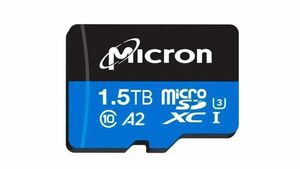
Micron Unveils World’s First 1.5TB microSD Card and Automotive Functional Safety-Certified Memory to Fuel Data at Intelligent Edge
"Micron Technology, Inc. (Nasdaq: MU), today announced expansions to its embedded product portfolio and ecosystem partnerships to deliver powerful solutions optimized for complex memory and storage demands at the intelligent edge. The company is sampling to customers the world’s highest-capacity microSD card, the i400, at an unprecedented density of 1.5 terabytes (TB). This card is designed for industrial-grade video security with the world’s first 176-layer 3D NAND, also pioneered by Micron. To better provide its high-performance, ruggedized solutions to the industrial market, Micron is also adding partners to its Industrial Quotient (IQ) partner program. Additionally, the company is announcing it has received the first International Organization of Standardization (ISO) 26262 Automotive Safety Integrity Level (ASIL) D certification of memory for its low-power double data rate 5 (LPDDR5) DRAM, which is based on its first-to-market 1α (1-alpha) process node. With next-generation advanced driver-assistance systems (ADAS) applications requiring increasing levels of autonomy and safety, this certification validates that Micron’s LPDDR5 meets strict functional safety standards and positions it to enable innovations that will unleash full autonomy in intelligent vehicles." [...]
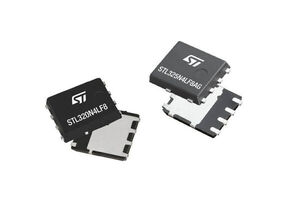
STMicroelectronics’ 40V STripFET F8 MOSFETs save energy and lower noise
"Cutting both on-resistance and switching loss, while optimizing body-diode properties, the STMicroelectronics 40V MOSFETs, STL320N4LF8 and STL325N4LF8AG, save energy and ensure low noise in circuits for power conversion, motor control, and power distribution. The new 40V N-channel enhancement-mode MOSFETs leverage the latest-generation STPOWER STripFET F8 oxide-filled trench technology to achieve superior figures of merit. The STL320N4LF8 and STL325N4LF8AG feature maximum on-resistance (Rds(on)) of 0.8mOhm and 0.75mOhm, respectively, at gate-source voltage (VGS) of 10V. The MOSFETs extremely efficient Rds(on) per die area allows a space-saving and thermally efficient PowerFLAT 5×6 package. ST’s advanced STripFET F8 technology also ensures excellent switching speed through low device capacitances that minimize dynamic parameters such as gate-drain charge, boosting the system efficiency. Designers can select switching frequency in the range from 600kHz to 1MHz, permitting smaller capacitive and magnetic components to save circuit size and bill of materials, as well as increasing the power density of the final application." [...]

NASA’s InSight Gets a Few Extra Weeks of Mars Science
"The mission’s team has chosen to operate its seismometer longer than previously planned, although the lander will run out of power sooner as a result. As the power available to NASA’s InSight Mars lander diminishes by the day, the spacecraft’s team has revised the mission’s timeline in order to maximize the science they can conduct. The lander was projected to automatically shut down the seismometer – InSight’s last operational science instrument – by the end of June in order to conserve energy, surviving on what power its dust-laden solar panels can generate until around December. Instead, the team now plans to program the lander so that the seismometer can operate longer, perhaps until the end of August or into early September. Doing so will discharge the lander’s batteries sooner and cause the spacecraft to run out of power at that time as well, but it might enable the seismometer to detect additional marsquakes. “InSight hasn’t finished teaching us about Mars yet,” said Lori Glaze, director of NASA’s Planetary Science Division in Washington." [...]
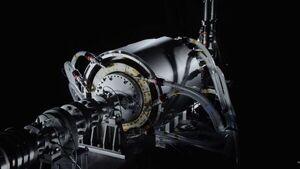
Toshiba to Develop Lightweight, Compact, High-Power Superconducting Motor Prototype for Mobility Applications
"Toshiba Energy Systems & Solutions Corporation (hereinafter, “Toshiba ESS”) today announced that it has developed a superconducting motor to meet the needs of the mobility sector. This superconducting motor can realize lightweight, high-output density and high-speed rotation, and can be made available for large mobility applications. Furthermore, this superconducting motor with these features is the first of its kind in the world. *1 Toshiba ESS will promote cooperation with the mobility industry and is aiming to commercialize this technology by the late 2020s. As global environmental awareness grows, movements to reduce greenhouse gas emissions, such as CO2, are accelerating rapidly in the mobility industry. In addition, the aviation industry, for example, is aiming to reduce emissions of CO2 to zero (carbon-free) by 2050." [...]
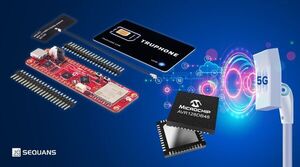
New 8-bit MCU Development Board Connects to 5G LTE-M Narrowband-IoT Networks
"The AVR-IoT Cellular Mini Development Board is the latest to join Microchip’s AVR® family, providing developers an easy blueprint for building IoT devices IoT network developers are looking for an easy path to implement a secure cellular connection in their design applications but are faced with design complexities and high deployment costs. To offer a solution for network designers who need the ultimate in location flexibility, low-power consumption and deployment simplicity, Microchip Technology Inc. (Nasdaq: MCHP) today announces the AVR-IoT Cellular Mini Development Board based on the AVR128DB48 8-bit microcontroller (MCU). This solution provides a robust platform to start building sensor and actuator nodes on 5G narrowband IoT networks. The AVR-IoT Cellular Mini Development Board is a small form factor board, making it an ideal solution for developers who want to connect IoT devices to an available 5G network. This is an essential feature for devices on the go or located in remote areas with limited availability of Long Range (LoRa®) networks or other Low Power Wide Area Network (LPWAN) solutions. Customers can tap into the flexibility and ease of design offered in the latest AVR128DB48 8-bit MCU family, including security protection with Microchip’s ATECC608 CryptoAuthentication™ device." [...]
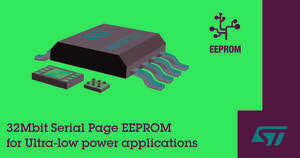
STMicroelectronics delivers breakthrough in non-volatile memory with industry’s first Serial Page EEPROM
"Building upon its proven expertise in serial EEPROM technology, STMicroelectronics has introduced the market’s first Serial Page EEPROM. This brand-new class of EEPROM is a high-density, page-erasable SPI memory that delivers unique and unprecedented flexibility and performance with ultra-low power consumption. Starting with the 32Mbit M95P32, ST will grow the new Serial Page EEPROM family by adding 16Mbit and 8Mbit density options in due course. The innovative architecture gives designers the ability to mix firmware management and flexible data storage in the same device, a combination not previously available. This higher level of memory integration reduces bill of materials (BoM) and time-to-market, increases application value, and enables smaller modules with ultra-low power operation and thus longer battery lifetime. These devices are ideal for implementing all-in-one non-volatile memory in new system designs for applications such as industrial IoT modules, wearables, healthcare, medical, electronic shelf-edge labelling, smart meters, and 5G optical-fiber modules." [...]

New Bluetooth® LE wireless MCUs make high-quality RF and power performance more affordable
"Engineers can add Bluetooth Low Energy technology to more products than ever before with TI's new CC2340 wireless MCUs. Texas Instruments (TI) (NASDAQ: TXN) today expanded its connectivity portfolio with a new family of wireless microcontrollers (MCU) that enable high-quality Bluetooth® Low Energy (LE) at half the price of competing devices. Featuring best-in-class standby current and radio-frequency (RF) performance, the SimpleLink™ Bluetooth LE CC2340 family is built on the foundation of TI’s decades of wireless connectivity expertise. Pricing for the CC2340 family will start as low as $0.79, making it affordable for engineers to add Bluetooth LE connectivity to more products. For more information, see www.ti.com/cc2340. "Industrywide, 5 billion Bluetooth® enabled devices are forecast to ship in 2022," said Mark Powell, CEO of the Bluetooth Special Interest Group (SIG), the standards organization that oversees Bluetooth technology." [...]

Renesas Launches World’s Most Highly Integrated Advanced Bluetooth Low Energy SoC
"New SmartBond DA1470x Family Features Small Form Factor with Integrated Applications and 2D Graphics Processors, Voice Activity Detector and Power Management Enables Small Form Factor for IoT Product Designs. Renesas Electronics Corporation (TSE: 6723) today announced the SmartBond™ DA1470x Family of Bluetooth® low energy (LE) solutions―the world’s most advanced, integrated System-on-Chip (SoC) family for wireless connectivity. The DA1470x Family is the only solution in the Bluetooth LE space to integrate a power management unit, a hardware voice activity detector (VAD), a Graphics Processing Unit (GPU) and Bluetooth LE connectivity all into a single chip. This combined functionality provides smart IoT devices with the most advanced sensor and graphical capabilities and seamless, ultra-low-power, always-on audio processing. The new family is ideal for wearables like smartwatches and fitness trackers; glucose monitor readers and other consumer medical and healthcare devices; home appliances with displays; industrial automation and security systems; and Bluetooth consoles such as e-bikes and gaming equipment. “The DA1470x family expands on our successful strategy of integrating more functions, including greater processing power, expanded memory and improved power modules, along with VAD for always-on wake and command word detection,” said Sean McGrath, Vice President of the Connectivity and Audio Business Division in Renesas’ IoT, Industrial and Infrastructure Business Unit." [...]

Samsung Unveils ISOCELL Image Sensor With Industry’s Smallest 0.56μm Pixel
"The 200MP HP3’s 12% smaller pixels can reduce camera module area by 20% The Super QPD solution enables more accurate and quicker auto-focusing Samsung Electronics, a world leader in advanced semiconductor technology, today introduced the 200MP ISOCELL HP3, the image sensor with the industry’s smallest 0.56-micrometer (μm)-pixels. “Samsung has continuously led the image sensor market trend through its technology leadership in high resolution sensors with the smallest pixels,” said JoonSeo Yim, Executive Vice President of Sensor Business Team at Samsung Electronics. “With our latest and upgraded 0.56μm 200MP ISOCELL HP3, Samsung will push on to deliver epic resolutions beyond professional levels for smartphone camera users.” Epic Resolution Beyond Pro Levels Since its first 108MP image sensor roll-out in 2019, Samsung has been leading the trend of next-generation, ultra-high-resolution camera development. Through the steady launch of new image sensors and advancements in performance, the company is once again forging ahead with the 0.56μm 200MP ISOCELL HP3. The ISOCELL HP3, with a 12 percent smaller pixel size than the predecessor’s 0.64μm, packs 200 million pixels in a 1/1.4” optical format, which is the diameter of the area that is captured through the camera lens. This means that the ISOCELL HP3 can enable an approximately 20 percent reduction in camera module surface area, allowing smartphone manufacturers to keep their premium devices slim." [...]
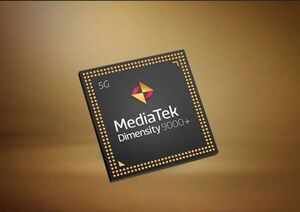
MediaTek Expands Flagship Smartphone Performance with the Dimensity 9000+
"The company’s latest chipset offers device makers another high-performance option for flagship smartphones. MediaTek today announced the Dimensity 9000+, an enhancement to the company’s top-of-the-line 5G smartphone chipset. This new high-end offering delivers a boost in performance over the Dimensity 9000 to make the next generation of flagship smartphones even more powerful and efficient. The new Dimensity 9000+ system-on-chip (SoC) integrates Arm’s v9 CPU architecture with a 4nm octa-core process, combining one ultra-Cortex-X2 core operating at up to 3.2GHz (compared to 3.05GHz with the Dimensity 9000) with three super Cortex-A710 cores and four efficiency Cortex-A510 cores. The advanced CPU architecture and Arm Mali-G710 MC10 graphics processor built into the new chipset provide more than a 5% boost in CPU performance and more than 10% improvement in GPU performance. “Building on the success of our first flagship 5G chipset, the Dimensity 9000+ ensures that device makers always have access to the most advanced high-performance features and the latest mobile technologies, making it possible for their top-tier smartphones to stand out,” said Dr. Yenchi Lee, Deputy General Manager of MediaTek’s Wireless Communications Business Unit." [...]
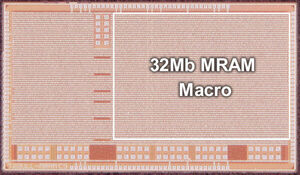
Renesas Develops Circuit Technologies for 22-nm Embedded STT-MRAM with Faster Read and Write Performance for MCUs in IoT Applications
"Announced at 2022 Symposium on VLSI: Achieving 5.9 ns Random Read Access and 5.8 MB/s Write Throughput on Test Chip. Renesas Electronics Corporation (TSE:6723), a premier supplier of advanced semiconductor solutions, today announced that it has developed circuit technologies for an embedded spin-transfer torque magnetoresistive random-access memory (STT-MRAM, hereinafter MRAM) test chip with fast read and write operations fabricated using a 22-nm process. The test chip includes a 32-megabit (Mbit) embedded MRAM memory cell array and achieves 5.9-nanosecond (ns) random read access at a maximum junction temperature of 150°C, and a write throughput of 5.8-megabyte-per-second (MB/s). Renesas presented these achievements on June 16 at the 2022 IEEE Symposium on VLSI Technology and Circuits, held between June 12 and 17 in Hawaii. As the advances of IoT and AI technologies continue, microcontroller units (MCUs) used in endpoint devices are expected to deliver higher performance than ever, and therefore need to be fabricated with finer process nodes. MRAM fabricated in BEOL (Note 1) is advantageous compared to flash memory fabricated in FEOL (Note 2) for sub-22 nm processes because it is compatible with existing CMOS logic process technology and requires fewer additional mask layers." [...]
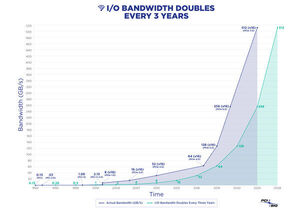
PCI-SIG® Announces PCI Express® 7.0 Specification to Reach 128 GT/s
"PCI-SIG Developers Conference 2022 – PCI-SIG® today announced that the PCI Express® (PCIe®) 7.0 specification will double the data rate to 128 GT/s and is targeted for release to members in 2025. PCI-SIG technical workgroups will be developing the PCIe 7.0 specification with the following feature goals: - Delivering 128 GT/s raw bit rate and up to 512 GB/s bi-directionally via x16 configuration - Utilizing PAM4 (Pulse Amplitude Modulation with 4 levels) signaling - Focusing on the channel parameters and reach - Continuing to deliver the low-latency and high-reliability targets - Improving power efficiency - Maintaining backwards compatibility with all previous generations of PCIe technology “For 30 years the guiding principle of PCI-SIG has been, ‘If we build it, they will come,’” observed Nathan Brookwood, Research Fellow at Insight 64. “Early parallel versions of PCI technology accommodated speeds of hundreds of megabytes/second, well matched to the graphics, storage and networking demands of the 1990s. In 2003, PCI-SIG evolved to a serial design that supported speeds of gigabytes/second to accommodate faster solid-state disks and 100MbE Ethernet. Almost like clockwork, PCI-SIG has doubled PCIe specification bandwidth every three years to meet the challenges of emerging applications and markets. Today’s announcement of PCI-SIG’s plan to double the channel’s speed to 512 GB/s (bi-directionally) puts it on track to double PCIe specification performance for another 3-year cycle.” “With the forthcoming PCIe 7.0 specification, PCI-SIG continues our 30-year commitment to delivering industry-leading specifications that push the boundaries of innovation,” said Al Yanes, PCI-SIG President and Chairperson." [...]
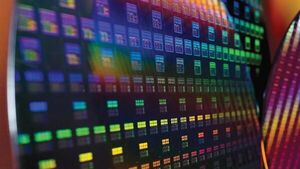
TSMC Reveals 2nm Node: 30% More Performance by 2025
"TSMC details nanosheet-based GAAFET N2 process node. Taiwan Semiconductor Manufacturing Co. today officially introduced its N2 (2nm class) manufacturing technology, its first node that will use gate-all-around field-effect transistors (GAAFETs), at its 2022 TSMC Technology Symposium. The new fabrication process will offer a full-now performance and power benefits, but when it comes to transistor density, it will barely impress in 2025 when it comes online. Being an all-new process technology platform, TSMC's N2 brings in two essential innovations: nanosheet transistors (which is what TSMC calls its GAAFETs) and backside power rail that both serve the same goal of increasing performance-per-watt characteristics of the node. GAA nanosheet transistors feature channels surrounded by gates on all four sides, which reduces leakage; furthermore, their channels can be widened to increase drive current and boost performance or shrunken to minimize power consumption and cost. To feed these nanosheet transistors with enough power and now waste any of it, TSMC's N2 uses backside power delivery, which the foundry considers to be among the best solutions to fight resistances in the back-end-of-line (BEOL)." [...]
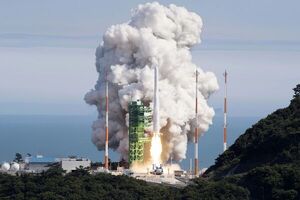
South Korea launches first satellite with homegrown rocket
"The Nuri rocket's second launch made South Korea the 10th country to place a satellite with its own technology. South Korea conducted its first successful satellite launch using a domestically developed rocket on Tuesday, officials said, boosting its growing aerospace ambitions and demonstrating it has key technologies needed to launch spy satellites and build larger missiles amid tensions with rival North Korea. The three-stage Nuri rocket placed a functioning “performance verification” satellite at a target altitude of 435 miles after its liftoff from South Korea’s space launch center on a southern island, the Science Ministry said. The satellite transmitted signals about its status to an unmanned South Korean station in Antarctica. It is carrying four smaller satellites that will be released in coming days for Earth observation and other missions, ministry officials said. “The science and technology of the Republic of Korea have made a great advance,” Science Minister Lee Jong-Ho said in a televised news conference at the launch center." [...]

SpaceX launches and lands 3rd rocket in 36 hours
"Sunday morning's mission lofted a communications satellite for the company Globalstar. SpaceX just completed a remarkable spaceflight tripleheader. A two-stage Falcon 9 rocket launched from Florida's Cape Canaveral Space Force Station on Sunday (June 19) at 12:27 a.m. EDT (0427 GMT), carrying a communications satellite for the Louisiana-based company Globalstar to orbit. Ten minutes after liftoff, the rocket's first stage came back to Earth for a vertical landing on the SpaceX droneship Just Read The Instructions, which was stationed in the Atlantic Ocean off the Florida coast. The satellite was deployed into orbit about 1 hour and 50 minutes after launch as planned, SpaceX tweeted(opens in new tab). It was the third mission for SpaceX in just over 36 hours." [...]
Ciência e Tecnologia
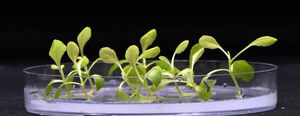
Artificial photosynthesis can produce food without sunshine
"Scientists are developing artificial photosynthesis to help make food production more energy-efficient here on Earth, and one day possibly on Mars Photosynthesis has evolved in plants for millions of years to turn water, carbon dioxide, and the energy from sunlight into plant biomass and the foods we eat. This process, however, is very inefficient, with only about 1% of the energy found in sunlight ending up in the plant. Scientists at UC Riverside and the University of Delaware have found a way to bypass the need for biological photosynthesis altogether and create food independent of sunlight by using artificial photosynthesis. The research, published in Nature Food, uses a two-step electrocatalytic process to convert carbon dioxide, electricity, and water into acetate, the form of the main component of vinegar. Food-producing organisms then consume acetate in the dark to grow. Combined with solar panels to generate the electricity to power the electrocatalysis, this hybrid organic-inorganic system could increase the conversion efficiency of sunlight into food, up to 18 times more efficient for some foods." [...]

Robots play with play dough
"A new system lets robots manipulate soft, deformable material into various shapes from visual inputs, which could one day enable better home assistants. The inner child in many of us feels an overwhelming sense of joy when stumbling across a pile of the fluorescent, rubbery mixture of water, salt, and flour that put goo on the map: play dough. (Even if this happens rarely in adulthood.) While manipulating play dough is fun and easy for 2-year-olds, the shapeless sludge is hard for robots to handle. Machines have become increasingly reliable with rigid objects, but manipulating soft, deformable objects comes with a laundry list of technical challenges, and most importantly, as with most flexible structures, if you move one part, you’re likely affecting everything else. Scientists from MIT’s Computer Science and Artificial Intelligence Laboratory (CSAIL) and Stanford University recently let robots take their hand at playing with the modeling compound, but not for nostalgia’s sake." [...]
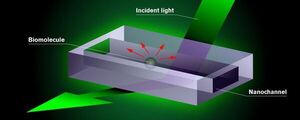
Microscopy method paves the way for new discoveries
"A groundbreaking microscopy technique that makes it possible to study biomolecules, nature's smallest biological building blocks, in a new, more efficient way. This is presented by researchers from Chalmers and University of Gothenburg, using so-called nanochannels to study the molecules. “This new microscopy method opens new possibilities towards studying small biomolecules. This will allow us to gain new insights into the biological function of cells and tissues,” says Giovanni Volpe, Professor at the Department of Physics at the University of Gothenburg. Biomolecules are both small and elusive, but vital since they are the building blocks of everything living. In order to get them to reveal their secrets using optical microscopy, researchers currently need to either mark them with a fluorescent label or attach them to a surface." [...]

Researchers release open-source photorealistic simulator for autonomous driving
"MIT scientists unveil the first open-source simulation engine capable of constructing realistic environments for deployable training and testing of autonomous vehicles. Hyper-realistic virtual worlds have been heralded as the best driving schools for autonomous vehicles (AVs), since they’ve proven fruitful test beds for safely trying out dangerous driving scenarios. Tesla, Waymo, and other self-driving companies all rely heavily on data to enable expensive and proprietary photorealistic simulators, since testing and gathering nuanced I-almost-crashed data usually isn’t the most easy or desirable to recreate. To that end, scientists from MIT’s Computer Science and Artificial Intelligence Laboratory (CSAIL) created “VISTA 2.0,” a data-driven simulation engine where vehicles can learn to drive in the real world and recover from near-crash scenarios. What’s more, all of the code is being open-sourced to the public. “Today, only companies have software like the type of simulation environments and capabilities of VISTA 2.0, and this software is proprietary." [...]
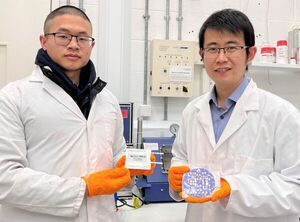
New lithium-CO2 batteries are being manufactured at Surrey, with potential to revolutionise energy storage
"Lithium-based batteries capable of capturing carbon dioxide to help store energy are being designed and manufactured by the University of Surrey, thanks to support from the Faraday Institute. These lithium-CO2 batteries have a theoretical energy density of 1800 Wh/kg, which is substantially higher than that of lithium-ion battery systems on the market today – meaning lighter batteries or more capacity for the same weight, with potential benefits across industrial applications. Dr Yunlong Zhao, project lead from the University of Surrey, said: "We are incredibly excited about lithium-CO2 battery technology, which has the potential to revolutionise the energy storage industry and move us ever closer to reaching net-zero emissions. With the help of our bespoke fabrication platform, we can design and manufacture practical lithium–CO2 pouch cells that eliminate the problems these batteries have faced in the past." Current designs of lithium-CO2 batteries suffer from major inefficiencies caused by electrolyte leakage and evaporation. The team from Surrey is proposing to design and produce lithium-CO2 batteries with valve-regulated sealed 'pouch' cells to solve these problems." [...]
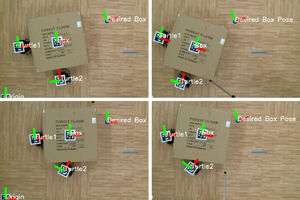
MIT engineers devise a recipe for improving any autonomous robotic system
"A new general-purpose optimizer can speed up the design of walking robots, self-driving vehicles, and other autonomous systems. Autonomous robots have come a long way since the fastidious Roomba. In recent years, artificially intelligent systems have been deployed in self-driving cars, last-mile food delivery, restaurant service, patient screening, hospital cleaning, meal prep, building security, and warehouse packing. Each of these robotic systems is a product of an ad hoc design process specific to that particular system. In designing an autonomous robot, engineers must run countless trial-and-error simulations, often informed by intuition. These simulations are tailored to a particular robot’s components and tasks, in order to tune and optimize its performance." [...]

New Ultrathin Capacitor Could Enable Energy-Efficient Microchips
"Scientists turn century-old material into a thin film for next-gen memory and logic devices. The silicon-based computer chips that power our modern devices require vast amounts of energy to operate. Despite ever-improving computing efficiency, information technology is projected to consume around 25% of all primary energy produced by 2030. Researchers in the microelectronics and materials sciences communities are seeking ways to sustainably manage the global need for computing power. The holy grail for reducing this digital demand is to develop microelectronics that operate at much lower voltages, which would require less energy and is a primary goal of efforts to move beyond today’s state-of-the-art CMOS (complementary metal-oxide semiconductor) devices. Non-silicon materials with enticing properties for memory and logic devices exist; but their common bulk form still requires large voltages to manipulate, making them incompatible with modern electronics." [...]

Technique Allows Researchers to Align Gold Nanorods with Magnetic Fields
"An international team of researchers has demonstrated a technique that allows them to align gold nanorods using magnetic fields, while preserving the underlying optical properties of the gold nanorods. “Gold nanorods are of interest because they can absorb and scatter specific wavelengths of light, making them attractive for use in applications such as biomedical imaging, sensors, and other technologies,” says Joe Tracy, corresponding author of a paper on the work and a professor of materials science and engineering at North Carolina State University. It is possible to tune the wavelengths of light absorbed and scattered by engineering the dimensions of the gold nanorods. Magnetically controlling their orientation makes it possible to further control and modulate which wavelengths the nanorods respond to. “In other words, if you can control the alignment of gold nanorods, you have greater control over their optical properties,” Tracy says. “And using magnetic fields to control that alignment means that you can control the alignment without actually touching the nanorods.” In their technique, the researchers synthesize separate solutions of gold nanorods and iron oxide nanoparticles." [...]

A modern space race needs to be built on sustainability
"Researchers have called for a more sustainable approach to the UK’s National Space Strategy in a new publication from The University of Manchester, On Space. Based on leading research and expertise on innovative and emerging technologies, experts are calling for sustainability to be at the forefront of humanity’s next phase of space exploration. In On Space, experts ask policymakers to consider space debris, satellite orbits and the investment needed to roll out sustainable space technology on Earth. Many technologies used to counter climate change, including solar panels, started out as space-age innovations. Future innovations in space technology could be used to further reduce carbon emissions here on Earth. Dr Aled Roberts explains one of the biggest challenges for off-world habitat construction is the transportation of building materials, which can cost upwards of £1m per brick." [...]
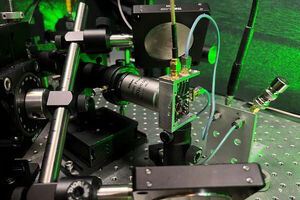
Quantum sensor can detect electromagnetic signals of any frequency
"MIT engineers expand the capabilities of these ultrasensitive nanoscale detectors, with potential uses for quantum computing and biological sensing. Quantum sensors, which detect the most minute variations in magnetic or electrical fields, have enabled precision measurements in materials science and fundamental physics. But these sensors have only been capable of detecting a few specific frequencies of these fields, limiting their usefulness. Now, researchers at MIT have developed a method to enable such sensors to detect any arbitrary frequency, with no loss of their ability to measure nanometer-scale features. The new method, for which the team has already applied for patent protection, is described in the journal Physical Review X, in a paper by graduate student Guoqing Wang, professor of nuclear science and engineering and of physics Paola Cappellaro, and four others at MIT and Lincoln Laboratory. Quantum sensors can take many forms; they’re essentially systems in which some particles are in such a delicately balanced state that they are affected by even tiny variations in the fields they are exposed to." [...]
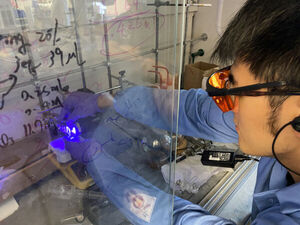
Process to customize molecules does double duty
"Rice lab draws on nature to create flexible precursors for drug, materials design Inspired by your liver and activated by light, a chemical process developed in labs at Rice University and in China shows promise for drug design and the development of unique materials. Researchers led by Rice chemist Julian West and Xi-Sheng Wang at the University of Science and Technology of China, Hefei, are reporting their successful catalytic process to simultaneously add two distinct functional groups to single alkenes, organic molecules drawn from petrochemicals that contain at least one carbon-carbon double bond combined with hydrogen atoms. Better yet, they say, is that these alkenes are “unactivated” -- that is, they lack reactive atoms near the double bond -- and until now, have proven challenging to enhance. The chemical pathway detailed in the Journal of the American Chemical Society could simplify the creation of a library of precursors for the pharmaceutical industry and enhance the manufacture of polymers. West, whose lab designs synthetic chemistry processes, said the initial inspiration came from an enzyme, cytochrome P450, the liver uses to eliminate potentially harmful molecules. “These enzymes are sort of buzzsaws that grind up molecules before they can get you into trouble,” he said." [...]
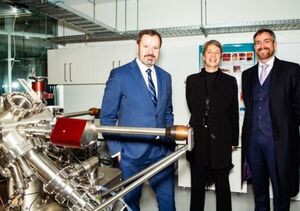
UNSW quantum scientists deliver world’s first integrated circuit at the atomic scale
"Industry and Science Minister Ed Husic has touted the world-leading work of UNSW Sydney quantum scientists during a visit to the Kensington campus on Thursday. Mr Husic, who was on campus for the announcement of a significant technical breakthrough by UNSW Professor Michelle Simmons and the team at Silicon Quantum Computing (SQC), said the latest development is evidence of Australia’s superiority in the space. “I want to tell you how much what you do means to the country,” said Mr Husic, referring to the SQC team gathered at the event. “You are contributing over a long period of time to something that is a big deal not just for the country, but for the world.” Mr Husic acknowledged the work of Prof. Simmons and the SQC researchers who announced the development of the world’s first integrated circuit manufactured at the atomic scale. “Our quantum capabilities are clearly world-leading and building on the proud history of research excellence,” Mr Husic said. “It is a clear sign that our companies, our entrepreneurs and our researchers are some of the world’s best.” Keeping quantum research in Australia Mr Husic also highlighted the government’s commitment to keeping talent in Australia." [...]
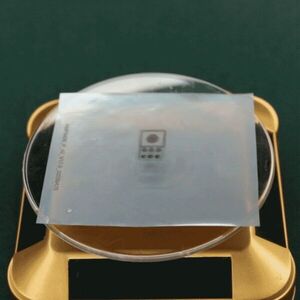
Ultra-Thin Film Creates Vivid 3D Images with Large Field of View
"Glass-free technique could enable visual features that don’t require special reading devices or illumination Researchers have developed a new ultra-thin film that can create detailed 3D images viewable under normal illumination without any special reading devices. The images appear to float on top of the film and exhibit smooth parallax, which means they can be clearly viewed from all angles. With additional development, the new glass-free approach could be used as a visual security feature or incorporated into virtual or augmented reality devices. “Our ultra-thin, integrated reflective imaging film creates an image that can be viewed from a wide range of angles and appears to have physical depth,” said research team leader Su Shen from Soochow University in China. “It can be easily laminated to any surface as a tag or sticker or integrated into a transparent substrate, making it suitable for use as a security feature on banknotes or identity cards.” In the Optica Publishing Group journal Optics Letters, the researchers describe their new imaging film. At just 25 microns thick, the film is about twice as thick as household plastic wrap." [...]

Robotic lightning bugs take flight
"Inspired by fireflies, researchers create insect-scale robots that can emit light when they fly, which enables motion tracking and communication. Fireflies that light up dusky backyards on warm summer evenings use their luminescence for communication — to attract a mate, ward off predators, or lure prey. These glimmering bugs also sparked the inspiration of scientists at MIT. Taking a cue from nature, they built electroluminescent soft artificial muscles for flying, insect-scale robots. The tiny artificial muscles that control the robots’ wings emit colored light during flight. This electroluminescence could enable the robots to communicate with each other." [...]

Electrically Conductive Paints and Other Polymer Alloys Now Produced Easily
"Researchers from the University of Tsukuba and collaborating partners prepared polyaniline in a wide range of cheap solvents. This development will facilitate advanced applications in printed circuit boards and other technologies Tsukuba, Japan—Medical devices, cars, and many advanced technologies contain innumerable delicate components that are held together by electrically conductive polymers, such as polyaniline. For several decades, synthesis of polyaniline for industrial electronics applications has faced a major limitation: what solvent best facilitates synthesis? This abstract question is important for minimizing the cost and complexity of polyaniline production and facilitating useful properties such as shaping. The ability to use a range of cheap, low-boiling-point solvents would greatly assist versatile polymer processing modes such as inkjet printing, but had remained elusive until now. In a study recently published in Polymer-Plastics Technology and Materials, researchers from the University of Tsukuba and collaborating partners have synthesized polyaniline in various common solvents." [...]
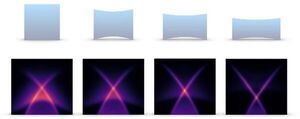
Disentangling superconductors
"Stewart Blusson Quantum Matter Institute researchers investigate intricacies in superconductors with hopes to support quantum computer development. Ryan Day studies superconductors. Materials that conduct electricity perfectly, losing no energy to heat and resistance. Specifically, the University of California, Berkeley scientist studies how superconductors can coexist with their opposites; insulating materials that stop the flow of electrons. The materials that combine these two opposed states, called topological superconductors, are understandably weird, hard to characterize and engineer, but if one could design them properly, they could play an important role in quantum computing. “Every computer is prone to error, and that is no different when you move to quantum computing— it just gets a lot harder to manage." [...]

Optical Microphone Developed by CMU Researchers Sees Sound Like Never Before
"Dual-Shutter Vibration-Sensing System Uses Ordinary Cameras To Achieve Extraordinary Results A camera system developed by Carnegie Mellon University researchers can see sound vibrations with such precision and detail that it can reconstruct the music of a single instrument in a band or orchestra. Even the most high-powered and directed microphones can't eliminate nearby sounds, ambient noise and the effect of acoustics when they capture audio. The novel system developed in the School of Computer Science's Robotics Institute (RI) uses two cameras and a laser to sense high-speed, low-amplitude surface vibrations. These vibrations can be used to reconstruct sound, capturing isolated audio without inference or a microphone. "We've invented a new way to see sound," said Mark Sheinin, a post-doctoral research associate at the Illumination and Imaging Laboratory (ILIM) in the RI. "It's a new type of camera system, a new imaging device, that is able to see something invisible to the naked eye."" [...]

Scientists emulate nature in quantum leap towards computers of the future
"Quantum computing hardware specialists at UNSW have built a quantum processor in silicon to simulate an organic molecule with astounding precision. A team of quantum computer physicists at UNSW Sydney have engineered a quantum processor at the atomic scale to simulate the behaviour of a small organic molecule, solving a challenge set some 60 years ago by theoretical physicist Richard Feynman. The achievement, which occurred two years ahead of schedule, represents a major milestone in the race to build the world’s first quantum computer, and demonstrates the team’s ability to control the quantum states of electrons and atoms in silicon at an exquisite level not achieved before. In a paper published today in the journal Nature, the researchers described how they were able to mimic the structure and energy states of the organic compound polyacetylene – a repeating chain of carbon and hydrogen atoms distinguished by alternating single and double bonds of carbon. Lead researcher and former Australian of the Year, Scientia Professor Michelle Simmons, said the team at Silicon Quantum Computing, one of UNSW’s most exciting start-ups, built a quantum integrated circuit comprising a chain of 10 quantum dots to simulate the precise location of atoms in the polyacetylene chain. “If you go back to the 1950s, Richard Feynman said you can't understand how nature works unless you can build matter at the same length scale,” Prof. Simmons said." [...]

On the Road to Tiny Transistors, How Flat is Flat?
"New study reveals that 2D interfaces in future transistors may not be as flat as previously thought. Transistors are the building blocks of modern electronics, used in everything from televisions to laptops. As transistors have gotten smaller and more compact, so have electronics, which is why your cell phone is a super powerful computer that fits in the palm of your hand. But there’s a scaling problem: Transistors are now so small that they are difficult to turn off. A key device element is the channel that charge carriers (such as electrons) travel across between electrodes. If that channel gets too short, quantum effects allow electrons to effectively jump from one side to another even when they shouldn’t." [...]

Technology helps self-driving cars learn from own memories
"An autonomous vehicle is able to navigate city streets and other less-busy environments by recognizing pedestrians, other vehicles and potential obstacles through artificial intelligence. This is achieved with the help of artificial neural networks, which are trained to “see” the car’s surroundings, mimicking the human visual perception system. But unlike humans, cars using artificial neural networks have no memory of the past and are in a constant state of seeing the world for the first time – no matter how many times they’ve driven down a particular road before. This is particularly problematic in adverse weather conditions, when the car cannot safely rely on its sensors. Researchers at the Cornell Ann S. Bowers College of Computing and Information Science and the College of Engineering have produced three concurrent research papers with the goal of overcoming this limitation by providing the car with the ability to create “memories” of previous experiences and use them in future navigation. Doctoral student Yurong You is lead author of “HINDSIGHT is 20/20: Leveraging Past Traversals to Aid 3D Perception,” which You presented virtually in April at ICLR 2022, the International Conference on Learning Representations." [...]

Following ultrafast magnetization dynamics in depth
"The future development of functional magnetic devices based on ultrafast optical manipulation of spins requires an understanding of the depth-dependent spin dynamics across the interfaces of complex magnetic heterostructures. A novel technique to obtain such an “in depth” and time-resolved view on the magnetization has now been demonstrated at the Max Born Institute in Berlin, employing broadband femtosecond soft X-ray pulses to study the transient evolution of magnetization depth profiles within a magnetic thin film system. In current information technology, functional magnetic devices typically consist of stacks of thin layers of magnetic and nonmagnetic materials, each only about one nanometer thick. The stacking, choice of atomic species, and the resulting interfaces between the layers are key to the particular function, for example as realized in the giant magnetoresistance read heads in all magnetic hard drives. Over the last years, it was shown that ultrashort laser pulses down to the femtosecond range (1 femtosecond = 10-15 s) can effectively and very fast manipulate the magnetization in a material, allowing a transient change or even permanent reversal of the magnetization state. While these effects have been predominantly studied in simple model systems, future applications will require an understanding of magnetization dynamics in more complex structures with nanometer-scale heterogeneity." [...]
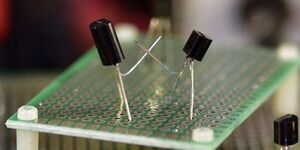
Organic bipolar transistors
"Devices made using thin-film semiconductors have attracted much interest recently owing to new application possibilities. Among materials systems suitable for thin-film electronics, organic semiconductors are of particular interest; their low cost, biocompatible carbon-based materials and deposition by simple techniques such as evaporation or printing enable organic semiconductor devices to be used for ubiquitous electronics, such as those used on or in the human body or on clothing and packages1,2,3. The potential of organic electronics can be leveraged only if the performance of organic transistors is improved markedly. Here we present organic bipolar transistors with outstanding device performance: a previously undescribed vertical architecture and highly crystalline organic rubrene thin films yield devices with high differential amplification (more than 100) and superior high-frequency performance over conventional devices. These bipolar transistors also give insight into the minority carrier diffusion length—a key parameter in organic semiconductors. Our results open the door to new device concepts of high-performance organic electronics with ever faster switching speeds." [...]

Molecular double-slit and quantum tunnelling in intense laser light
"When a light wave hits a double-slit, a characteristic pattern of bright and dark stripes appears behind the obstacle, generated by constructive or destructive superposition (interference) of the light waves, depending on the direction of the observed light. In quantum physics, this phenomenon is also found in matter waves, e.g. electrons released from a diatomic molecule by photoionization. Here, the characteristic quantity is the distance between the atoms in the molecule (bond length). Besides the structure of the molecule, on closer inspection the time difference of the light wave fronts hitting the atoms also plays a role if, e.g., the molecular axis is tilted to the light path (see Fig. 2)." [...]
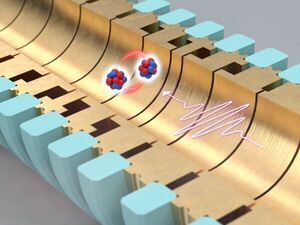
Quantum electrodynamics tested 100 times more accurately
"Using a newly developed technique, scientists at the Max Planck Institute for Nuclear Physics (MPIK) in Heidelberg have measured the very small difference in the magnetic properties of two isotopes of highly charged neon in an ion trap with previously inaccessible accuracy. Comparison with equally extremely precise theoretical calculations of this difference allows a record-level test of quantum electrodynamics (QED). The agreement of the results is an impressive confirmation of the standard model of physics, allowing conclusions regarding the properties of nuclei and setting limits for new physics and dark matter. Electrons are some of the most fundamental building blocks of the matter we know. They are characterized by some very distinctive properties, such as their negative charge and the existence of a very specific intrinsic angular momentum, also called spin. As a charged particle with spin, each electron has a magnetic moment that aligns itself in a magnetic field similar to a compass needle." [...]
Documentação
A documentação é parte essencial do processo de aprendizagem e a Internet além de artigos interessantes de explorar também tem alguma documentação em formato PDF interessante de ler. Todos os links aqui apresentados são para conteúdo disponibilizado livremente pelo editor do livro.

HackSpace magazine #56
"From component choice, to packaging, to marketing, to the million other things that you need to do when you scale up production, we’ll help you turn your project into a product – and along the way it’ll help you be a better maker. - Build a rocket-powered wing-wing glider out of balsa wood and 3D printed parts (it’s like the space shuttle, but smaller and cheaper, and dare we say it, better) - Discover new things to do with concrete, if you’re lucky enough to have a bag of cement to spare - Control the brightness of addressable LEDs with the magic of dithering - Make hobby electronics projects without feeling like you’re ruining the planet" [...]
Projetos Maker
Diversos Projetos interessantes.
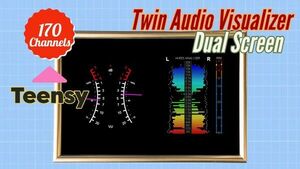
PJRC Teensy 4.x AudioVisualizer
"This project was primarily created for the ReVox A700 reel2reel tape recorder, but can also be used in general. Copyright (C) 2021 by DIYLAB https://www.diylab.de Actually, the project is meant to replace the analog pointer instrument of the ReVox A700 with a TFT display. However, the field of application is not limited to this! Analog VU meters, RMS and PPM meters, spectrum analysis, goniometer and correlation are displayed. The appearance of the individual modules can be set in detail with an extra tool and also all workspaces (see below). There will also be the PCB for the project and a schematic here soon." [...]

Myoelectric sensor-controlled hand prosthesis
"Print a prosthesis on your 3D printer and use a myoelectric sensor to control it. The driving idea of this project is to study different methods of controlling a robotic prosthesis of a human upper limb. Since this prosthesis aims to improve the quality of life of people with upper limb amputations, helping to perform routine tasks considered simple for non-amputees. It is hoped that this study will help in the dissemination of the technologies that will be studied and that in the future it will open doors for the improvement or discovery of new technologies. Robotic prosthetics, to many people, may still seem like something out of science fiction movies, a technology still unattainable. However, there are already prostheses on the market, especially those for upper limbs, of the most diverse types and purposes." [...]
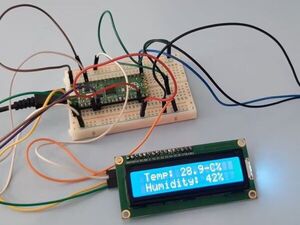
Temperature and humidity measurement
"The aim of the project is to make a system for measuring the temperature and humidity in a room. The system starts with a phone using a Bluetooth terminal. It connects to the bt-06 bluetooth module and sends ‘1’ to start the measurement. Thus, the sensor starts to measure and transmit on the 16x2 LCD screen in real time the temperature and humidity in the room. The system must be connected to a minimum 5V power source. " [...]
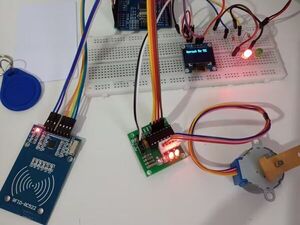
Door lock system with Arduino and RFID Module!
"Hey! This project shows how to make a door lock system, using Arduino, RFID Module, OLED Display and Stepper Motor. Hello! On this project, I'll show how to make a door lock system using RFID module, stepper motor and OLED display. This all controlled by one Arduino. " [...]
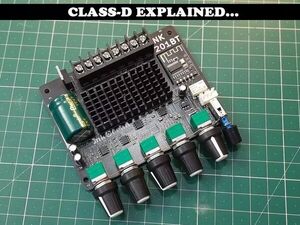
Say No to class D? Explained
"Why class D amplifiers are not used in professional circuit, how amplifiers work and why Class D amplifiers are more efficient. I made many audio amplifiers using Class AB configuration. But, working with those big amplifiers are very heavy job. These amplifiers need more power, dual supply and heavy rectifiers/filtering circuits. We cannot power these Class AB amplifiers using single SMPS, A linear power supply with center tapped transformer is must. Now the real problem comes with car audio system." [...]
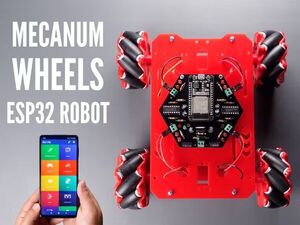
ESP32 Mecanum Wheels Robot and Bluetooth Gamepad Controller
"In this project we will see how to make an ESP32 Mecanum Wheels Robot which is capable of moving in any direction. In this project we will see how to make an ESP32 Mecanum Wheels Robot which is capable of moving in any direction. This unique mobility of the robot is achieved by using special type of wheels, called Mecanum Wheels. The robot can be controlled via bluetooth with an application that you can use on both iOS and Android smartphones. Also, this project shows a simple breadboard circuit for beginner readers, and a printed circuit board for those who want a more useful prototype. Check out the video to see how it works..." [...]
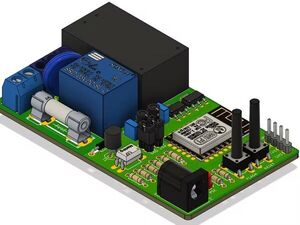
Wifi IoT ESP8266 Relay Board Schematic
"You'll learn how to create and assembly your own IoT PCB Automation. Anyone can control a device over the internet using this electronic board with Wifi support. It has the necessary features to facilitate installation and automation. The wifi automation devices market sell their products, but you cannot modify the software as per your needs. It prevents you from: · Create, sell and earn money by creating specific solutions for your customers, · You are dependent on the equipment on the market and its updates, · Learn to build your own solutions with a free board. For these reasons we created the WIFI ESP8266 Relay Board." [...]
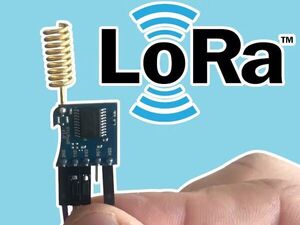
How to use RYLR998 LORA module with Arduino
"Working with RYLR998 LORA and Arduino Pro Min 8v. In this tutorail I will show you how to program RYLR998 LORA radio modules from Reyax. How to connect them to Arduino. I will also create the code that will allow to remotely control the state of LED with the pushbutton. " [...]

Arduino LED clock with DS3231 RTC module
"Arduino LED clock with the DS3231 RTC clock and contrlled by a rotary encoder. Finally I was able to complete the Arduino LED clock with DS 3231 RTC module. This is checked few days and I found the clock is working accurately. It is expected that there is no time changes during the operations as I have to check it about one moth to identify the errors. This arduino clock has 6 digits, 2 for hours, 2 for minutes and the balance 2 for seconds. You can use this clock as 24h mode or 12 hour mode." [...]

Raspberry Pi RP2040 MCU Vult DSP template with FreeRTOS
"This C++ boilerplate template allows for creating Synthesizers, Effects and other Audio DSP related projects based on the cheap and easily available RP2040 MCU. It targets the "RP2040 Eurorack DSP Demo Board", which I have made. The DSP board contains: - RP2040 Dual-Core MCU (running at 400MHz) - MIDI input (5-pin DIN) - Stereo 3,5mm Audio Output (PCM5102 Audio Codec @44100Hz 32-bit) - 4 Eurorack-Compatible Trigger Inputs - 2 CV Inputs - USB Type-C for MCU USB - USB Type-C for UART Debug Bridges - Mount for I2C 128x32 SSD1306 OLED - Mount for PEC12R Encoder with Button - User/Trigger Button" [...]
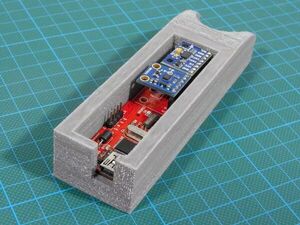
Virtual electronic finderscope
"StarPointer is a virtual electronic finderscope for astronomical telescopes. This device works with Stellarium and helps the observer identify objects in the sky. This unit can be attached to the telescope without modifications and connects with the computer through the USB port. The StarPointer uses a few onboard sensors to determine its angle and position. After obtaining that information, the unit calculates the RA (right ascension ) and DEC (declination) coordinates of the telescope and transfers those details to the Stellarium. The StarPointer builds around the STM32F103C8 microcontroller, ADXL345 3-axis accelerometer, and HMC5883L 3-axis magnetometer." [...]
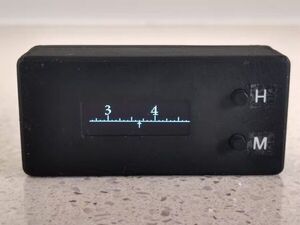
Timescale Clock
"A interesting presentation of a clock that shows the current time on a linear time line. On the Technoblogy website, David Johnson-Davies designed a Timescale Clock based on a ATtiny84 microprocessor. This seemed like a great project to upgrade with a PCB and a 3D printed case. I also changed the circuit to use a more modern microprocessor. The updated circuit is based around the ATtiny1614 microprocessor. It has 16K Flash memory and 2K RAM." [...]
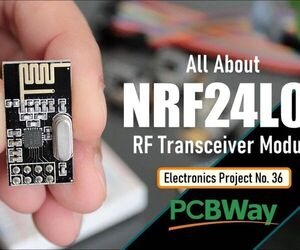
NRF24L01 Tutorial - Arduino Wireless Communication
"In this tutorial, I am going to show you guys how to use this transceiver module to add wireless communication between two or more Arduino boards. I will be using this module for many of my upcoming home automation projects. Bang Problem solved.. What Is a NRF24L01 RF Transceiver Module? So far, I have always used WiFi for wireless communication between microcontrollers. While this is easy enough to do, it is not exactly suitable for battery operated nodes. WiFi modules consume a lot of current when transmitting data plus they also have a slight delay when initiating the transmission as the module has to first connect to the WiFi network." [...]

ATtiny85 Snake Game Handheld
"The classic snake game but implemented on a ATiny85 When it comes to electronics, it's the free-form designed ones that always catch my eye. Seeing how all the wires and components are connected just make it so fascinating and nice to look at. I wanted to try building something in a similar style. Being aware my soldering skills are not as good as I'd like them to be, I decided to go for a bit easier but still kind of nice-looking option. The whole build was a process of trial and error that probably cost me a bit more time than I'd like to admit. It was also the first time I ever used a ATtiny (or anything besides an Arduino Uno), which posed many challenges." [...]

LumiClock
"This is a clock based project. The title of which embodies the main means of displaying the time. The "Lumi", being an abbreviation for Luminous. Utilising lumious paper in conjunction with UV LED's to display the time which fades over a period of time between updates. For a bit of added nostalgia, the numbers are in a dot matrix format. In addition to luminous paper and UV LED's the clock uses a Microbit, RTC, Digital Logic, 3D printing and Mechanical parts." [...]

Solar Powered Square Light
"A Square shaped Solar Light which completely made from scratch. The goal for making this was simple, I wanted to make an emergency light powerful enough for daily use. (To light up a certain area of my home during blackouts) LEDs are all powered by a 2600mAh 3.7V Li-ion cell, I've also added a TP4056 Li-ion charging IC in this setup, and the LEDs are all driven by an AO4406 N channel Mosfet IC. Also, this light contains a Dusk to Dawn feature which means when we plug the power IN for charging, the Main LED Light turns OFF and when we plug the charger out, it turns back ON. this feature is essential for using this light outside with a solar panel connected, we dont have to turn ON/OFF this light daily, the solar panel will trigger this light during the day and night time automatically. This Instructables is about the whole built process of this light setup, so let's get started!" [...]
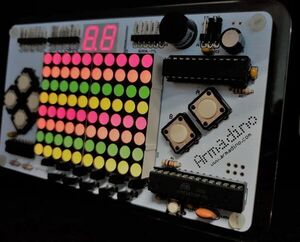
Armadino - an Arduino Gameboy, Clock, Electronic Lab, TVout Console and More...
"Some years ago, I came across Mignon and Meggy Jr RGB, and was intrigued enough to want to make something similar, but with a wider screen, more possibilities for experiment and play, and with few parts. I called it Armadino, after seeing an armadillo logo on the spine of a children story book and mixing it with the word Arduino. Styled like a Gameboy, Armadino has an 10x8 dual-color (reg and green) LED dot matrix screen, a 7-segment LED "score board", buzzer, and I2C and I/O breakout pins to play with. Programmable as an Arduino UNO, the Armadino software library includes functions for drawing on the LED matrix and 7-segment display, printing text on them, making tone, sensing buttons, and even working alongside the TVout library! I use it as a LED clock most of the time. Occasionally, I have fun with it with handheld games like the classic Snake, Space Invaders, Pong." [...]

A DIY hardware two-factor authenticator
"sing two-factor authentication is a great way to add extra protection to your online accounts. What is two-factor authentication (2FA)? I'll explain real quick if you don't know what I am talking about. Normally when you log into a website, you enter your username and password, and you are done. Your password is a single factor of authentication. A lot of web sites let you add a second step of authentication for added security." [...]

Build a Super-sized Expandable Seven Segment Display
"As with many inventions it became because of a need. I needed a very large display for a project but could not find a simple and extendible design, so I created this one. It's a single modular 3D printed digit mounted onto a sheet of acrylic. This allows you to slide several of these modules together into a simple wooden frame to make a display as long as you need. From 2 characters to 10 or more… You also have the choice to programme either a simple Arduino Nano or ESP8266 to drive the display - allowing you to use it to show text, numbers, or animations. The display is bright enough to be seen easily in bright environments and the addressable LED’s are diffused well thanks to the frosted acrylic inserts." [...]
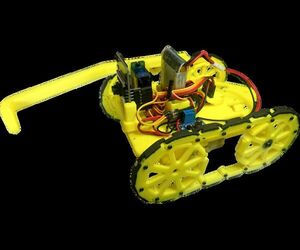
Tim's Little R.O.V.
"This is a little ROV I have designed and printed on my 3D Printer. Because I wanted visual feedback it has the ESP32-CAM Module as the main control unit. Because it has the ESP32-CAM Module, it can be controlled from any device that has Wi-Fi and a Web Browser. I wanted to keep it a simple as possible, yet have it able to do something. There was an earlier version of this that was as simple as it gets for making an ROV with an ESP32-CAM. This one has a couple of upgrades, it has a simple track system to give it some grip on uneven terrain and has an arm which can hook on to things." [...]

Control Cybot From Web Browser
"Control Cybot from any device that has Wi-Fi and a Web Browser. I wanted to give Cybot Sight, that is, add a camera to Cybot. To do this, I decided to use an ESP32-CAM module. This modification has been done on a Cybot that has had the Power Upgrade. Added issues 53 and 54. I also recommend it has the 8v regulator fix that was issued with issue 59." [...]
Secção Videos
Videos interessantes.
That's all Folks!



